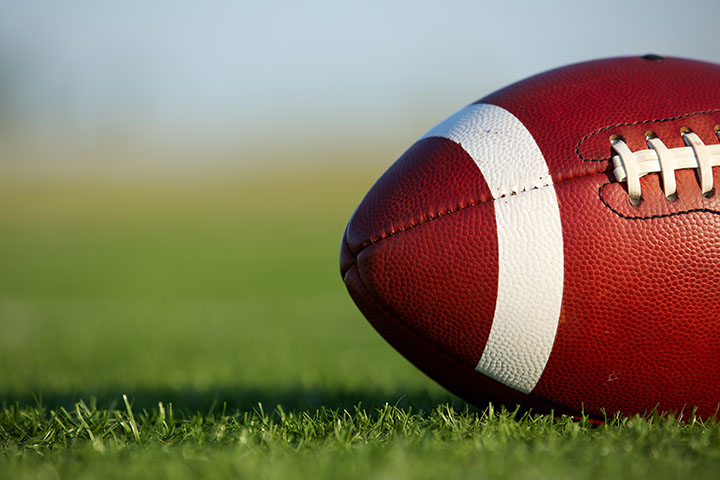
A college’s academic status may be determined as much by the teams it regularly meets on the football field as on the lectures and lessons taking place in its classrooms, according to a recently published study from researchers at Stanford University and University of Iowa.
“Our work shows that football is not an adjunct to the academic business of a university — it’s a part of that business,” said Mitchell Stevens, a study co-author who is associate professor of education at Stanford. “Football doesn’t corrode a school’s academic reputation. It enhances it. Contrary to what many academic professionals believe, academic and athletic reputations are not antagonistic. They’re complementary.”
In the study in the July issue of the journal Sociology of Education, Stevens and two colleagues find that intercollegiate football leagues are composed of schools that tend to be similar in measures of academic reputation. What’s more, over time, scores assessing the academic reputation of schools admitted to any given league come closer and closer to the scores of those already in that league. “This reputation convergence seems to be independent of change in underlying academic quality,” said Stevens.
The findings add another element in considering the potential effects of two developments last week: the Aug. 7 NCAA board of directors’ vote to give greater recruitment latitude to five of its most prominent conferences and the Aug. 8 federal court ruling to loosen restrictions on compensating athletes. (Both the NCAA decision and court ruling are under review.)
“While there is little question that the revenue-generating capacity of big-time college football is the main driver of the NCAA board’s decision, schools in those five conferences [the Big Ten, Big 12, Pac-12, Atlantic Coast and Southeastern Conferences] may also be gaming their academic reputations,” said Stevens. “Now that a new category of football conferences could be created, we may well see it further improve perceptions of the academic caliber of the member schools.”
In the United States more than anywhere else in the world, academics and athletics have long been linked. Yet while American educators and social scientists have written volumes on how universities manage their academic reputations, there has been relatively little on how athletics contributes to prestige. Stevens and his colleagues, Stanford researcher Arik Lifschitz and University of Iowa sociologist Michael Sauder, set out to explore the question.
For the study, the three scholars created and analyzed a comprehensive dataset linking information about school characteristics, conference affiliation, football performance and academic reputation (as measured by US News and World Report). Looking to understand how a successful football program affects status, they explored data on 283 American universities from 1896 to 2013 — all of them present or former members of the conferences included in the NCAA’s two top subdivisions.
The researchers found that all of the widely publicized recent entries to the Big Ten, Pac-12 and Southeastern conferences, for example, are schools closely comparable in terms of US News reputation scores to the standing members. “And, of course, the most academically prestigious league in the country, the Ivy League, has offered membership to no additional school since its formation in 1956,” said Stevens. “That exclusivity is not based on sports alone.”
Moreover, Stevens and his colleagues discovered that the academic reputation scores of schools entering a given league move closer to their league average at a rate of 3 percent per year. “This may seem like a modest increment, but in the cutthroat competition for higher places in the academic pecking order, there are no small gains or losses,” said Stevens, a member of the faculty of Stanford Graduate School of Education.
That competition, observe the researchers in their paper, goes back to the 19th century, when hundreds of colleges were created on the moving frontiers of a growing America: first in New England, then the South and upper Midwest, and ultimately all the way to the Pacific. People built schools to improve the lives of locals, demonstrate their sophistication to Easterners and Europeans, and train clergy for myriad religious denominations.
By the close of the 19th century, the result was a surplus of schools. “That created a fierce competition for students whose families were willing to pay tuition for dry classical curriculum,” said Stevens. How to distinguish one’s own institution in a crowded educational marketplace became an important priority for college leaders then — as now.
One solution was the encouragement of athletic competition, specifically football. “Football made college much more enjoyable, and frankly more macho, for the young men who were early higher education’s primary clientele,” explained Stevens, whose work in this arena began with the publication of his 2007 book, Creating a Class, in which he devoted a chapter to why colleges favor athletes in the admissions process. As the researchers note, the choice of opponents on the athletic field has long enabled institutions to define themselves as particular kinds of schools, exclusive of all but a few carefully chosen rivals.
The analysis in this recent paper helps to explain why so many schools spend money on football programs even when they lose money. “If a school’s reputation is implicated in whom it meets on the football field,” the authors write, “then supporting intercollegiate play can have important status benefits beyond any direct financial reward.”
So what might the new super-leagues do to academic reputations? Stevens believes it will probably enhance them. As he sees it, the new system will create even more public visibility for the member schools, enhancing the spotlight that enables academic assets to shine alongside the sports. “It’s been the American way for over a hundred years,” Stevens said. “Football brings fame to the faculty.”
Marguerite Rigoglioso writes frequently for Stanford Graduate School of Education.
Subscribe to our monthly newsletter.